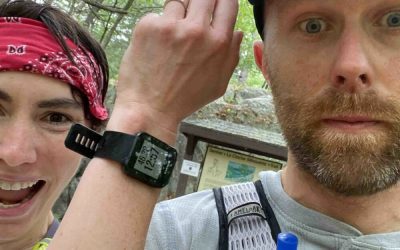When we start a training plan for cycling, we might be thinking about going faster in a race, finishing a big ride or improving our functional threshold power, which are all good goals. The issue with these outcome goals is they don’t take into account the type of training you need to improve. Most of us have one major limiter, whether it’s more neuromuscular/speed-based, muscular endurance focused, aerobic/endurance based or related to technical bike skills.
One way of making your training more effective is to think about your limiters, the things you struggle with, the hardest part of races for you, the places you have been beat or even … failed. This is how ‘failure’ can guide us and be an ally. If you always win and are the strongest in a group then you don’t get much, if any, feedback on where you should spend time training.
For me (Peter), this was sprinting and short term power. I love a good tempo or endurance ride. I would pick a hard 4 hour ride over 10 maximal 10second sprints. What made me better at mountain bike racing (of all durations)? More sprint work and less of my favorite training diet of moderate work. It doesn’t take much to maintain strengths but limiters require some focus and motivation.
If you are ready to take your training to the next level here are 3 common limiters and some ideas to train them:
Neuromuscular / Speed
Symptoms: You love to grind at low rpms, dislike high speed or flat riding and may find you take a long time to warmup, your legs might feel slow or full. Hard hills you dislike but longer climbs where you can grind away are fine. You didn’t do much sprinting or high speed work as a youth. Your breathing rarely gets elevated in workouts.
Train it by: Make sure you take recovery days and avoid excessive or intensive endurance. Aim to do 1-2 focused rides with 10-30 sec surges or sprints during an endurance ride each week and also a few in warmups for any other intervals performed. Work to increase your cadence with drills or by pedaling down hills rather than coasting. (e.g. 4-10 x 10-30 seconds full gas … use a variety of gearing, terrain).
Trying out cyclocross or crit racing or group riding on the road or mountain biking quickly may also help with these adaptations!
Muscular Endurance –
Symptoms: You have trouble sustaining your pace as workouts/races especially steady efforts like FTP tests or time-trials. You can complete the first lap/interval/portion of the race with the leaders but then drop of pace. You may find your legs are sore or feel limiting. You may adopt an higher RPM to avoid muscular tension (e.g. >95rpm in most cases)
Train it by: Put in the work on longer tempo, sweet spot or threshold intervals (zone 3-4), minimize coasting and work on holding a set power for 40+ Minutes (e.g. 3-4 x 10-20 min).
Many offroad riders will need to spend time on the road or longer climbs to develop this while road/indoor-riders may need to deal with more monotony and fewer group rides to get this adaptation.
Aerobic/Endurance –
Symptoms: You fatigue as rides get longer. You like to sprint or do shorter intervals. You might find your breathing is a limiter or quite elevated. Your heart rate may be high (low efficiency).
Train it by: riding more under aerobic threshold (zone 1/2) where you can talk comfortably in full sentences. This may be slow initially but put in the time! Improving dietary quality (lower highly processed/sugar-based foods) may help with this.
Offroad riders will need to spend time on the road or very flat terrain to pedal consistently and at lower outputs. Finding a like-minded (like-limited?) friend to pedal easy and chat with is the best way to go long and get the benefits of endurance benefits.
Bike Skills
Symptoms: You constantly get passed in technical sections of a course, or if you’re a road racer in a crit, you’re always getting gapped in corners.
Train it by: Actually riding the terrain you’re struggling with! For road riders, that means doing more corners, adding in more curb hops, et cetera. For mountain bikers, that means actually spending time on trails, sessioning certain obstacles. (And of course, you can also head to a clinic or book a skills training session with a coach!)
BONUS 5th Limiter? For many, if not all of us … Mental or psychological aspects
We discuss this more in a podcast on this theme HERE
Consider what you say to yourself when a workout gets hard, or you don’t feel like training, or a gap opens to the wheel ahead. How do you cope with adversity and discomfort? How do we frame failure?
The ‘workout’ is to set goals around re-focusing, re-framing, and reflecting on how you did on these aspects of your workout and performance.





